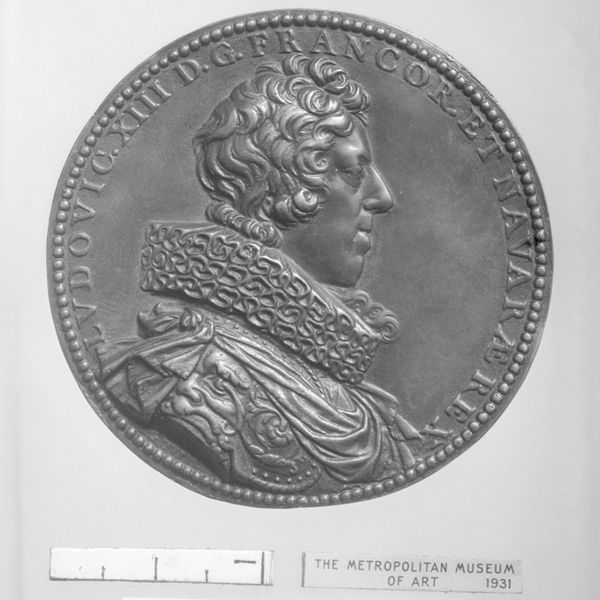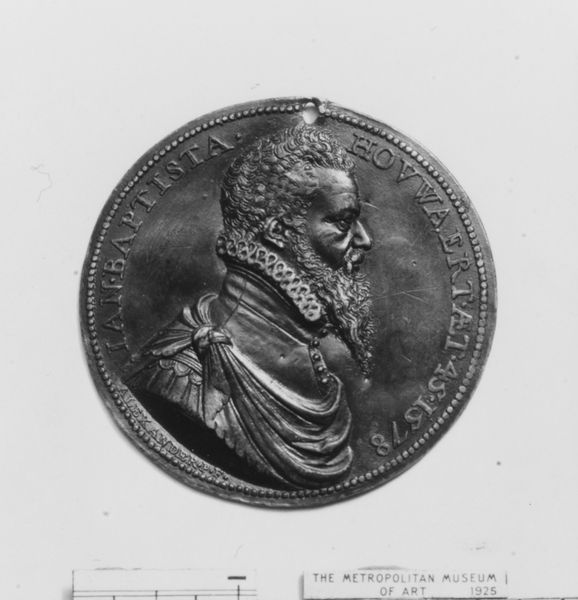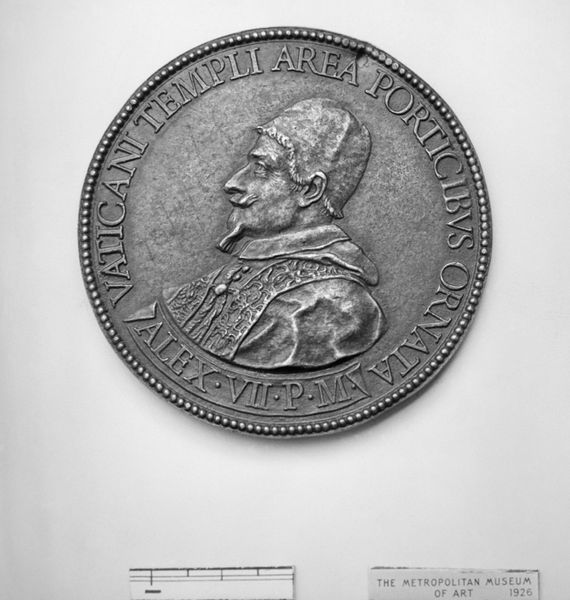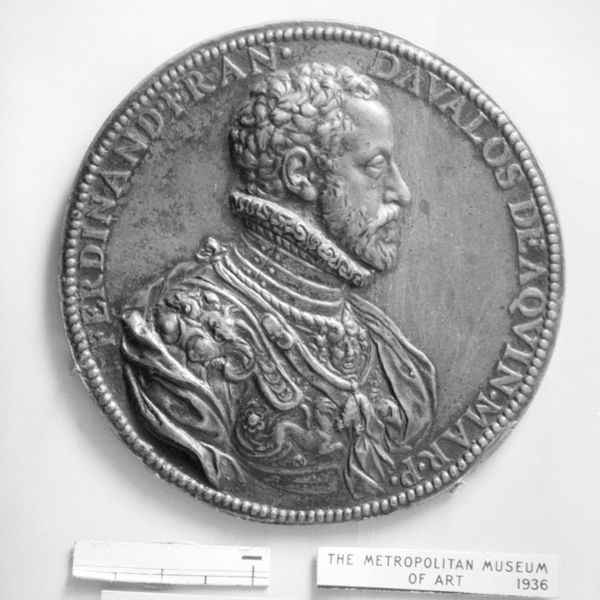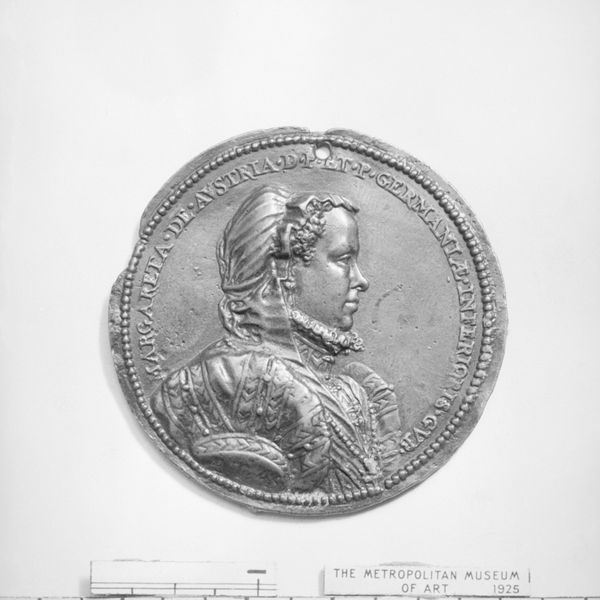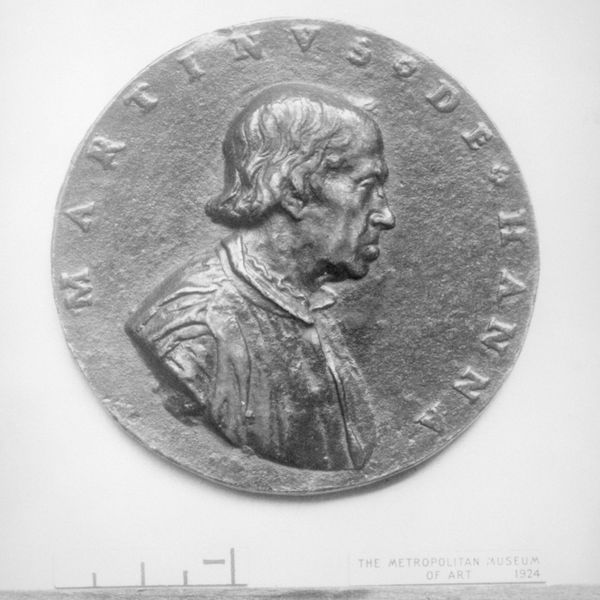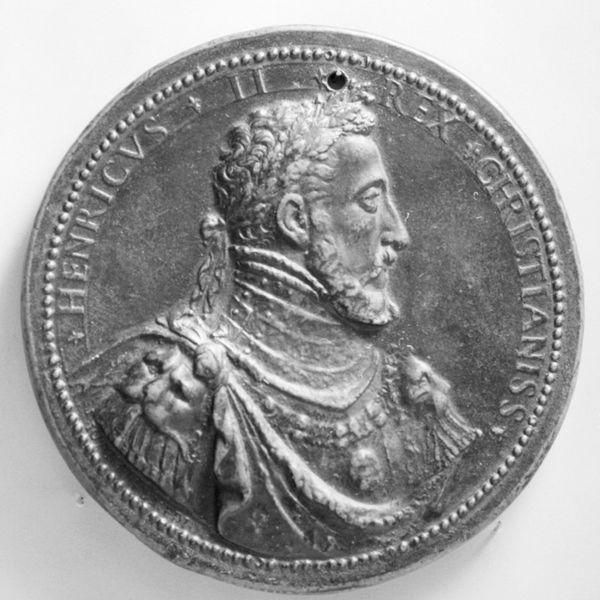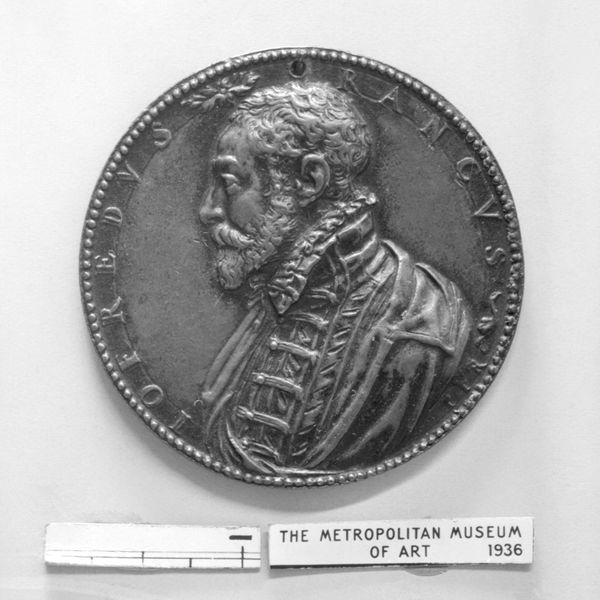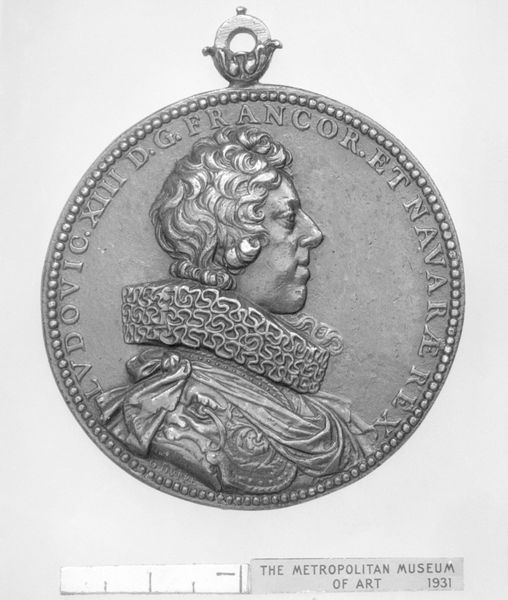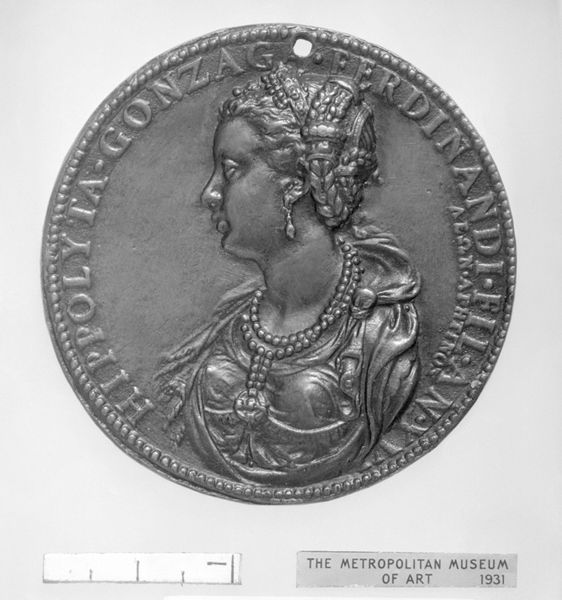
Jean-Louis de Nogaret de Lavalette, Duke of Épernon, colonel general of infantry (1554–1642) 1607
0:00
0:00
metal, relief, sculpture
#
portrait
#
medal
#
baroque
#
metal
#
sculpture
#
relief
#
sculpture
#
men
#
decorative-art
#
profile
Dimensions: Diam. 2 1/4 in. (57 mm.)
Copyright: Public Domain
Curator: This remarkable metal relief, currently housed at the Metropolitan Museum of Art, immortalizes Jean-Louis de Nogaret de Lavalette, Duke of Épernon. Created in 1607 by Guillaume Dupré, it presents the Duke in profile. Editor: My immediate reaction is one of solemnity. The monochrome metallic surface, combined with the Duke's stern profile, lends a serious, almost severe, atmosphere. It feels… weighty, both literally and figuratively. Curator: Weighty indeed. Dupré was a master of conveying status. The choice of metal itself signifies permanence, the desire to preserve the Duke's image for posterity. His position as Colonel General is visually communicated through the intricate armor. What’s fascinating to me are the symbols embedded in his depiction. Editor: The inscription circling the portrait—that's also crucial. It's not merely decorative; it actively frames the Duke within a system of language and power. Tell me more about the metal itself; what clues does that give us about its original context? Was it commissioned, or created for broader distribution? Curator: Likely commissioned, or at least, created with his explicit approval. Medals like these were often distributed as diplomatic gifts, reinforcing alliances and projecting power. The craftsmanship speaks to considerable resources. Consider the process: the initial design, the mold-making, the casting… each step involved skilled labor and costly materials. Editor: Right. We can't separate the image from the immense social effort required to produce it. I also wonder, how did this particular material affect the Duke’s symbolic projection? Was it chosen for its resemblance to silver, thus communicating status and prestige in material terms? Curator: The use of metal speaks to more than just status. It taps into alchemical symbolism as well, the idea of transforming base metals into something more valuable. To immortalize the Duke in metal connects him to notions of immortality and enduring legacy, just like transforming lead to gold. Editor: It’s an artwork where surface and depth truly intertwine. Thanks for unlocking the multi-layered message Dupré forged. Curator: My pleasure. It reveals the psychological depth embedded in seemingly simple portraits, highlighting cultural continuity through time and the strategic visual communication of that time.
Comments
No comments
Be the first to comment and join the conversation on the ultimate creative platform.
